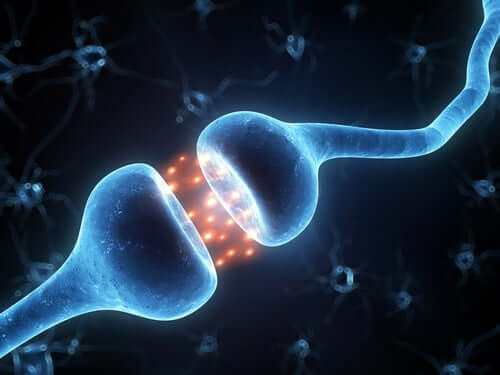The Four Types of Multiple Sclerosis


Written and verified by the doctor Leonardo Biolatto
There are four types of multiple sclerosis. They’re all potentially disabling and, unfortunately, not always easy to identify or differentiate from one another.
This is a chronic pathology that has no cure. For this reason, receiving this diagnosis is the sort of bad news that leaves many patients and their families devoid of hope.
There’ll be a delay in the initiation of appropriate treatment if the professional treating team is unable to determine the specific type in any given patient.
As a neurological pathology, it turns out to be quite a frequent cause of disability. This is because it tends to hit young adults — less than 40 years of age in general. These patients end up having to give up their studies and jobs most of the time.
All types of multiple sclerosis are of an autoimmune nature – that is, the body attacks itself. They do so by generating antibodies that destroy myelin, a substance that covers the nerves. Thanks to myelin, the transmission of nerve impulses occur and its destruction damages neural connectivity.
Symptoms of multiple sclerosis
Almost all types of multiple sclerosis share symptoms. What usually varies is its evolution over time.
The main signs of the disease appear in the locomotor system. Patients start to feel weakness in their limbs, walking becomes difficult, and they lose their balance. Their arms also weaken and they suddenly drop what’s in their hands.
Cramps are frequent symptoms, accompanied by pain in the muscles that contract involuntarily. A person with this condition tries to relax the area of the contractions, but they have no control over it.
Along with the cramps, there are tremors and spasms in the affected muscles. Needless to say, this makes it hard for them to carry out their daily activities, and it affects their quality of life.
The digestive system is another affected area. The different types of multiple sclerosis lead to constipation and retention of urine. This happens because the nerves that must carry the information of the peristaltic movement have no myelin.
Finally, it affects other organs such as the eyes. Some patients begin with double vision and then suffer from cramps and their limbs become weak. Along with double vision, there may be rapid movements of the eyeballs that this kind of patient can’t control.

Read more: What Are the Causes of Dysphagia?
Types of multiple sclerosis
Diagnostic protocols for this disease indicate there are four types of multiple sclerosis:
- RRMS (relapsing-remitting multiple sclerosis). It’s so-called because it alternates between periods of acute outbreaks with many symptoms and others without any signs of the pathology. Thus, the appearance of the outbreaks is usually linked to a new neurological sector affected by the lack of myelin. Also, this is the most common of the four.
- SPMS (secondary progressive multiple sclerosis). This one begins as RRMS but evolves into a form of constant symptoms and there are no rest periods. Its designation as “secondary” refers to the phase change from RRMS to PSMS.
- PPMS (primary progressive multiple sclerosis). There are almost no periods without symptoms here, and it starts progressively from zero, without evolving from an RRMS form. This is how it differs from the previous type.
- EMPR (relapsing progressive multiple sclerosis). This is the least common type of multiple sclerosis. In addition, sharp outbreaks are common in this one.

Discover more: Multiple Sclerosis – A Multi-Faceted Disease
Diagnosis and treatment
The international scientific community has agreed that the McDonald criteria are the standard for diagnosing all types of multiple sclerosis. Also, as we said above, one must wait for its evolution to know what type of multiple sclerosis any given patient has.
Furthermore, the treatments are similar in all of them. For starters, corticosteroids are used for acute outbreaks with signs of the evolution of myelin loss. In addition, drugs are prescribed that modify the evolution for the interval periods.
Thus, physical therapy is a key treatment, along with medications. Thus, there are various therapies that focus on the abilities that a patient is losing. It requires the intervention of physiotherapists, speech therapists, and occupational therapists.
The different types of multiple sclerosis coincide in severity
This disease is serious despite its four types of manifestations. Its evolution is chronic and progressive and leads to loss of motor functions over time. There’s no cure for it but much progress has been made in pharmacological control.
All cited sources were thoroughly reviewed by our team to ensure their quality, reliability, currency, and validity. The bibliography of this article was considered reliable and of academic or scientific accuracy.
- Thompson, Alan J., et al. “Diagnosis of multiple sclerosis: 2017 revisions of the McDonald criteria.” The Lancet Neurology 17.2 (2018): 162-173.
- Bermejo, Pedro E., Celia Oreja-Guevara, and Exuperio Díez-Tejedor. “El dolor en la esclerosis múltiple: prevalencia, mecanismos, tipos y tratamiento.” Rev Neurol 50.2 (2010): 101-8.
- Olascoaga, Javier. “Calidad de vida y esclerosis múltiple.” Rev Neurol 51.5 (2010): 279-88.
- Paes, Renata Alves, et al. “Neuropsicología de la esclerosis múltiple primaria progresiva.” Rev Neurol 49.7 (2009): 343-8.
This text is provided for informational purposes only and does not replace consultation with a professional. If in doubt, consult your specialist.








